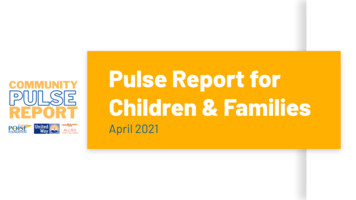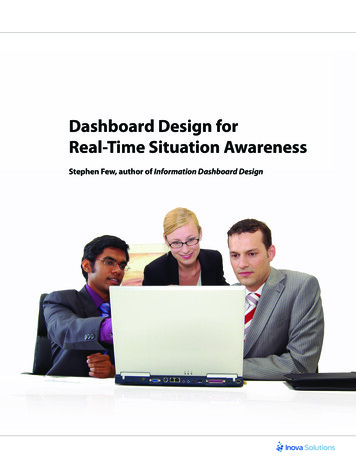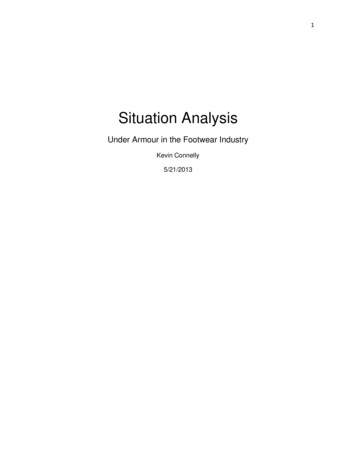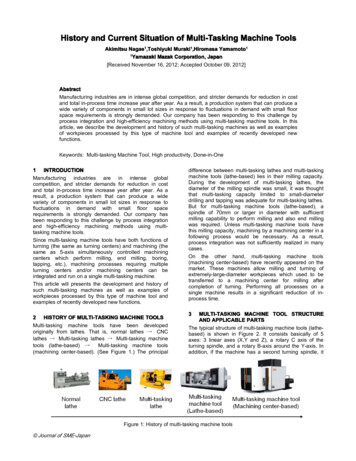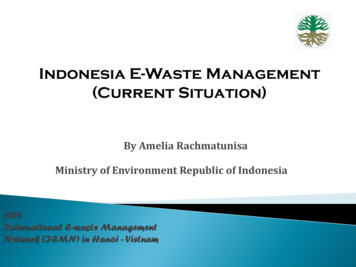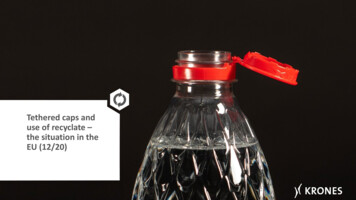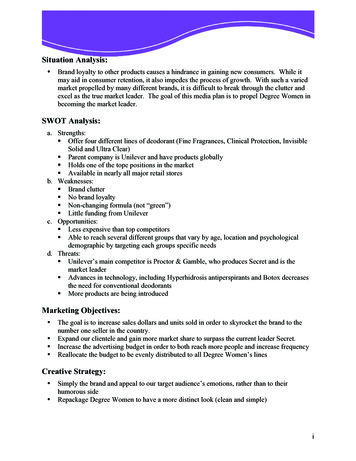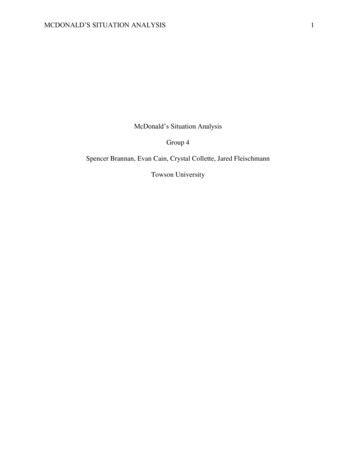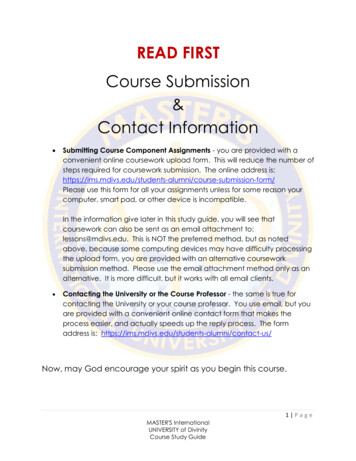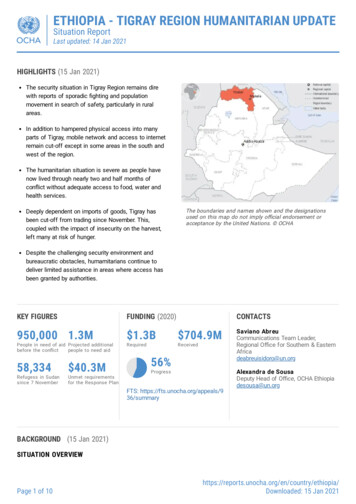
Transcription
ETHIOPIA - TIGRAY REGION HUMANITARIAN UPDATESituation ReportLast updated: 14 Jan 2021HIGHLIGHTS (15 Jan 2021)The security situation in Tigray Region remains direwith reports of sporadic fighting and populationmovement in search of safety, particularly in ruralareas.In addition to hampered physical access into manyparts of Tigray, mobile network and access to internetremain cut-off except in some areas in the south andwest of the region.The humanitarian situation is severe as people havenow lived through nearly two and half months ofconflict without adequate access to food, water andhealth services.Deeply dependent on imports of goods, Tigray hasbeen cut-off from trading since November. This,coupled with the impact of insecurity on the harvest,left many at risk of hunger.The boundaries and names shown and the designationsused on this map do not imply official endorsement oracceptance by the United Nations. OCHADespite the challenging security environment andbureaucratic obstacles, humamitarians continue todeliver limited assistance in areas where access hasbeen granted by authorities.KEY FIGURESFUNDING (2020)950,000 1.3M 1.3BRefugess in Sudansince 7 November 40.3MUnmet requirementsfor the Response PlanAndrej!58,334Required 704.9MReceived56%SorAnd ry,rej!People in need of aid Projected additionalbefore the conflictpeople to need aidCONTACTSProgressFTS: https://fts.unocha.org/appeals/936/summarySaviano AbreuCommunications Team Leader,Regional Office for Southern & EasternAfricadeabreuisidoro@un.orgAlexandra de SousaDeputy Head of Office, OCHA Ethiopiadesousa@un.orgBACKGROUND (15 Jan 2021)SITUATION OVERVIEWPage 1 of ownloaded: 15 Jan 2021
ETHIOPIA - TIGRAY REGION HUMANITARIAN UPDATESituation ReportLast updated: 14 Jan 2021The security situation in Tigray Region remains dire, with reports of sporadicfighting and population movement in search of safety, particularly in rural areas.There are reports of civilian casualties, including six aid workers. While accessfrom Mai-tsebri to Shire is now possible, ongoing hostilities dictate thathumanitarian partners put in place extreme safety and security measures ahead ofany field missions.In addition to hampered physical access into many parts of Tigray, mobile networkcommunications and access to internet remain cut-off, except in some areas insouthern and western parts of the region. Access to areas in Afar and Amhara regions where internally displaced peoplefrom Tigray have settled is also increasingly challenging due to military activities in the areas.The access constraints continue to challenge the speedy scale-up of humanitarian assistance and prevent the populationfrom accessing the necessary life-saving information and support.Overall, the humanitarian situation of the population is dire after nearly two and half months of fighting. With supply routescut-off and the harvest season impacted by the conflict, reports indicate that food is not available or is extremely limited inmarkets, posing increased risks of malnutrition. Pre-crisis malnutrition in Tigray was already on the rise due to COVID-19and desert locust infestation, with a 34 per cent increase registered in admissions of severely malnourished childrenbetween January and August 2020, compared to the same time in 2019.Access to repair water and sanitation systems, as well as provision of fuel and spare parts are needed to ensure therestoration of services and prevent the spread of water-borne diseases and epidemics, including COVID-19. In addition tofood, water, sanitation and hygiene, protection, health (including pshychosocial support), safety and security remain some ofthe priority concerns, as well as access to public services.ANALYSIS (15 Jan 2021)CROSS-BORDER IMPACTBetween 7 November and 14 January, the Sudanese GovernmentCommissioner for Refugees (CoR) and UNHCR registered 58,334refugees fleeing the armed conflict in Tigray Region. Given that UmRaquba, where refugees from Hamdayet, Abdrafi, and Village 8 havebeen relocated, has reached full capacity, an additional camp hasbeen opened in Tunaydbah area of Gedaref state. This new camp hasthe capacity to accommodate 24,000 refugees, according to UNHCR.The Sudanese Government and humanitarian partners continue toscale up life-saving assistance to the refugees, including hot mealsto the new arrivals. Health and WASH services as well as dry foodrations are also being offered to the refugees, with priority given topersons with specific needs. Safe space to raise protection concerns,and referral systems to identified protection issues have also beenestablished.Ethiopian refugees, fleeing clashes in Tigrayregion, cross the border into Hamdayet, Sudan,over the Tekeze river. Photo: UNHCR/HazimElhagVISUAL (7 Jan 2021)Page 2 of ownloaded: 15 Jan 2021
ETHIOPIA - TIGRAY REGION HUMANITARIAN UPDATESituation ReportLast updated: 14 Jan 2021EMERGENCY RESPONSE (15 Jan 2021)HUMANITARIAN PREPAREDNESS AND RESPONSEDespite the challenging security environment, humanitarians continue to deliver limited assistance with available resourcesand in the limited areas where access is relatively permissive. Accordingly, the Government of Ethiopia, through the NationalDisaster Risk Management Commission (NDRMC), has distributed 8,011 MT of mixed food items since the beginning of theconflict in Tigray, benefitting some 500,000 people. JEOP started distributing food for 80,000 beneficiaries identified by theTigray Regional State Interim Administration (IA) in late December. As of 11 January, it has distributed a double ration to60,000 beneficiares, which is approximately 75 per cent of the total approved caseload in Mekelle. This distribution is beingimplemented by JEOP partner REST (local NGO).Several nutrition partners had prepositioned medicines, nutrition supplies and equipment for the management of severe andmoderate acute malnutrition. While most of the TSFP activities were put on hold as a result of the escalating conflict inNovember, Enderta and Raya Azebo Woredas distributed specialized nutritious foods in December 2020 for the treatment ofmoderate acute malnutrition among children under age 5 and pregnant and breastfeeding mothers.WFP nutritioncoordinators are in the process of collecting data, including number of assisted people. Discussions are ongoing betweenPage 3 of ownloaded: 15 Jan 2021
ETHIOPIA - TIGRAY REGION HUMANITARIAN UPDATESituation ReportLast updated: 14 Jan 2021WFP and stakeholders on the possible introduction of a Blanket Supplementary Feeding Programme targeting children underage 5 and pregnant and breastfeeding mothers in selected Woredas in Tigray to prevent the deterioration in the nutritionalstatus of the population. A phased approach will be implemented based on accessibility and the prevailing security situation.During the Tigray Emergency Coordination Center (ECC) meeting convened on 8 January in Mekelle, participants highlightedhumanitarian needs and ongoing responses across sectors. Health services have stopped or are limited in many parts of theregion due to abandoned or looted health facilities. According to a rapid assessment conducted by the Regional HealthBureau, some 657 health workers fled violence in different zones in the region and are currently taking refuge in Mekelle.Several people require psychosocial support due to the trauma experienced, however, only Ayder Hospital in Mekelle isproviding services. With the support of ICRC and MSF, some medications have been dispatched to Axum, Adwa (Don BoscoHospital), Shire and Adigrate hospitals. Liquid and solid waste management has become a serious concern, and the meetingagreed to seek a focal person from the municipalities and address the issue.The Protection Cluster informed that registration of vulnerable people is ongoing in Mekelle. While five sub-cities in Mekellehave provided a list, two sub-cities are yet to do so. The INGO World Vision and ICRC have distributed core relief items todisplaced people sheltered in different schools in Mekelle, but were only able to address 1 per cent of the need.The Child Protection and Gender-Based Violence sub-Cluster was reactivated in Tigray. During the meeting held by membersof the sub-Cluster on 6 January, it was highlighted that the reactivation will ensure the protection of children and womenaffected by the conflict, and will enable a coordinated delivery of response.Meanwhile, an international surge capacity arrived in-country and is ready to deploy to Tigray to support the scale up of theresponse. On 12 January, OCHA, on behalf of the humanitarian community, has submitted a consolidated request to NDRMCfor the urgent movement of the international aid workers to Tigray, and is awaiting clearance. Separately, the LogisticCluster is coordinating the requests for the movement of humanitarian supplies into Tigray. A number of requests for cargomovement to Shire, Mai-tsebri and Mekelle were approved by NDRMC on 13 January.EMERGENCY RESPONSE (15 Jan 2021)RESPONSE BY CLUSTERFOOD SECURIT YThe Government of Ethiopia, through, NDRMC, has distributed 8,011 MT of mixed food items since the beginning ofthe conflict in Tigray, benefitting some 500,000 people. This includes 2,410 MT of food items distributed sinceDecember 2020, targeting 160,683 beneficiaries in Adigrat, Wukro, Ferewoini, Mehoni, Raya, Queha, Axum, Adi-gudom,Abi-Adi, and Tanaqua abergele Woredas.JEOP started distributing food for 80,000 beneficiaries identified by the Tigray Regional State Interim Administration(IA) in late December. As of 11 January, it has distributed a double ration to 49,469 beneficiares, which isapproximately 62 per cent of the total approved caseload in Mekelle. This distribution is being implemented by JEOPpartner REST (local NGO).Food dispatch/distributions have not yet started in the 12 JEOP-covered woredas, which were targeted for round 6and round 7 of the 2020 Humanitarian Response Plan (HRP). Insecurity and delays in receiving master beneficiarylists are the main impediments to response.WFP supported the Government’s effort to provide food assistance to IDPs by allocating 23 MT of CSB , benefitting5,000 IDPs in Mekelle.Page 4 of ownloaded: 15 Jan 2021
ETHIOPIA - TIGRAY REGION HUMANITARIAN UPDATESituation ReportLast updated: 14 Jan 2021Some 25,000 refugees in Adi Harush and Mai Ayni camps received food assistance as of end December. Thisincludes 18 WFP trucks that delivered 250MT of corn soya blend, grains, pulses and vegetable oil to localhumanitarian partners for distribution to 13,000 refugees in Mai Ayni camp; and additional 240MT of food delivered toAdi Harush refugee camp to benefit 12,170 refugees. Ethiopia’s Agency for Refugees and Returnee Affairs (ARRA),WFP and UNHCR jointly monitored the delivery and distribution of the one month worth supplies. The refugees hadreceived two months’ worth of relief food in mid-October.In Mehoni, the local community provided 200 kgs of wheat flour for Government workers in the energy, water, andhealth sectors as well as made blanket food distribution for the community in the area. In 15 Kebeles of Alamata,some 3000 people in each Kebele received 15kgs of wheat flour from the Government. The Government and CatholicRelief Services (CRS) distributed two rounds of targeted food distributions in Dansha, Humera and May Kadra for atotal combined quantity of 1,097,37MT.AGRICULT UREThe Cluster is providing animal feed to 6,416 households in the host communities in Dalifage, Dewe and Mile inZones 1 and 5, Afar Region; and animal health support (5,638 households) and agricultural tools (2,400 houesholds)in Asayita, Chifra, Dubti and Mile in Zone 1.In addition, unconditional cash transfer was made to 3,725 households in the host community in Berhale and Dalol inZone 2 (Afar).All activities will be completed by 31 January 2021.EMERGENCY SHELT ER AND NON-FOOD IT EMSNDRMC has distributed partial NFI kits to some 2,456 IDP households in Mai Tsebri, Dansha, Humera, Mai Kadra, AdiArkai, Tselemt, Beyda, Janamora, Dabat and Debark; and partial kits were dispatched from NDRMC warehouse for3,343 households.The Ethiopian Red Cross distributed NFI kits to 400 households in Mekelle (Tigray), while ICRC distributed NFI kits to250 IDP households in Mai Kadra as well as 560 IDP households in Abdurafi (Amhara). IRC is currently distributingfull ES/NFI and dignity kits to 1,400 households in Adi Arekay (Tigray). In addition, IOM is currently distributing NFIkits to 479 IDP households in Central Gonder and Gonder Town (Amhara), while CARE is distributing NFI kits to 900IDP households in Debarke and Mai Tsebri (Amhara) and dignity kits to 1000 IDP households in Debarke, GonderTown (Amhara) and Maitsebri (Tigray). World Vision International (WVI) provided ES/NFI kits to 300 households inDebark and Chercher (Amhara). Additional kits are currently being distributed by NRC to 3,000 households in Yallo,Megale and Aba’ala (Afar).To date, Catholic Relief Services (CRS) provided NFI kits for 200 IDP households in Dansha and an additional 200IDPs in Baeker, and plans to provide NFIs for 2400 households in Humera, May Kadra and Tselemet IDP camps. CRSalso supported 302 IDPs in Central Gonder and Gonder Town (Amhara) with shelter construction, while IOMconstructed 13 communal shelters for IDPs in Gonder and Dabat Towns.Additional ES/NFI kits are prepositioned and ready for distribution once security allows. CRS, Concern Worldwide,GOAL, WVI, SCI, NRC, IOM, RRF and IRC are planning to reach 46,400 households through ES/NFI kits and cashinterventions.HEALT HThree first-line responders - ICRC (in Mekelle), MSF-E (in South Tigray), MSF-H (in West Tigray) and WHO (inMekelle) - amongst others are supporting trauma care and essential health services.Page 5 of ownloaded: 15
c ut- of f and the harves t s eas on impac ted by the c onflic t, reports indic ate that f ood is not available or is extremely limited in mark ets , pos ing inc reas ed ris k s of malnutrition.
